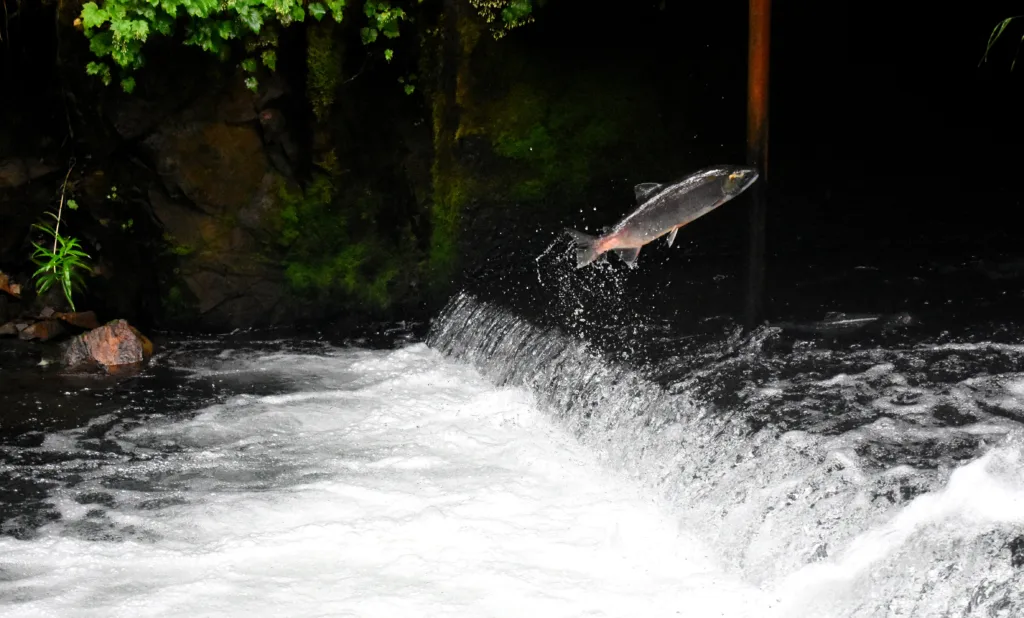R-selected species are those that have a high reproductive rate and invest less energy in each offspring. These species are characterized by their ability to produce large numbers of offspring in a short period of time. In contrast to K-selected species, which invest more energy in fewer offspring, r-selected species prioritize quantity over quality.
One example of an r-selected species is the Pacific salmon. These fish lay thousands of eggs at once and die shortly ater spawning. The high reproductive rate allows for a large number of offspring to survive and thrive, ensuring the continuation of the species. However, the low investment in each offspring means that only a small percentage of the offspring will survive to adulthood.
Insects are also commonly classified as r-selected species. Many insects, such as mosquitoes and cockroaches, have short lifespans and produce large numbers of offspring. This strategy ensures that at least some of the offspring will survive to adulthood and reproduce, continuing the species.
Another example of an r-selected species is the bacteria. Bacteria reproduce through a process called binary fission, where one bacterium splits into two identical daughter cells. This allows for a rapid increase in population size, with some bacteria populations doubling in as little as 20 minutes.
Corals are also considered r-selected species. Corals reproduce through both asexual and sexual reproduction, with some species releasing millions of eggs and sperm into the water column. The high reproductive rate ensures that at least some of the offspring will survive to form new colonies.
R-selected species prioritize quantity over quality when it comes to reproduction. Examples include Pacific salmon, insects, bacteria, and corals. These species have high reproductive rates but invest less energy in each offspring, ensuring the continuation of the species through sheer numbers.
What Is An R Strategist Species?
An R strategist species, also known as r-selected species, is a type of species whose population size is primarily determined by their biotic potential or maximum reproductive capacity (r). These species are characterized by a high reproductive rate, short lifespan, and low investment in each offspring. They ofen have a small body size, early maturity, and a high dispersal ability. Examples of r-strategist species include insects, rodents, and some plants. In contrast, K-selected species, also known as K-strategist, are species whose populations are controlled by the carrying capacity (K) of their habitat. They have a low reproductive rate, long lifespan, and high investment in each offspring. Examples of K-strategist species include humans, elephants, and whales. Understanding the life-history strategies of species is essential in ecology and conservation biology for predicting population dynamics and managing wildlife populations.

What Are R Strategists And K Strategists Examples?
R strategists and K strategists are two types of organisms that have dfferent reproductive strategies. R strategists are organisms that have a high reproductive rate, produce a large number of offspring, and have a short life span. Some examples of r strategists include bacteria, insects, and corals.
On the other hand, K strategists are organisms that have a low reproductive rate, produce few offspring, and have a long life span. These organisms invest more time and resources into their offspring to ensure their survival. Examples of K strategists include humans, primates, and elephants.
Other examples of r strategists include dandelions, mosquitoes, and rats, while examples of K strategists include whales, bears, and eagles.
It is important to note that not all organisms fit neatly into one category or the other, and some may exhibit traits of both r and K strategists depending on their environment and other factors.
What Is An Example Of An R Species?
An r-selected species is characterized by a high reproductive rate and a short lifespan. These species usually produce numerous offspring at a time, but invest little energy in parental care. An example of an r-selected species would be the common frog, which can lay up to 4,000 eggs at a time. Other examples of r-selected species include most insects, such as flies, mosquitoes, and ants, as well as some fish species like salmon. These animals are adapted to environments with unstable conditions and high rates of mortality, where producing large numbers of offspring increases the likelihood of survival for at least some of the offspring.
Are Humans R Strategists Or K Strategists?
Humans are generally considered to be K strategists. K strategists prioritize quality over quantity when it coes to reproduction, meaning that they produce fewer offspring but invest more time and resources in each one. This is in contrast to r strategists, which prioritize quantity over quality and produce many offspring with minimal investment in each one.
There are several characteristics that are commonly associated with K strategists, including a longer gestation period, higher birthweight, delayed sexual maturation, lower sex drive, and longer lifespan. Humans exhibit all of these traits, which supports the classification of humans as K strategists.
While there is some variation in reproductive strategies within the human population, the majority of humans are considered to be K strategists based on their reproductive patterns and associated traits.

Conclusion
R-selected species are those that exhibit a high biotic potential and produce a large number of offspring at a time. These species are often characterized by a short lifespan, early maturity, and rapid growth. Examples of r-selected animals include insects, bacteria, and corals. These species have adapted to environments that are unstable and unpredictable, where rapid reproduction is necessary for survival. Understanding the life history strategies of different species is crucial for conservation efforts and can help us better manage and protect our natural resources.
